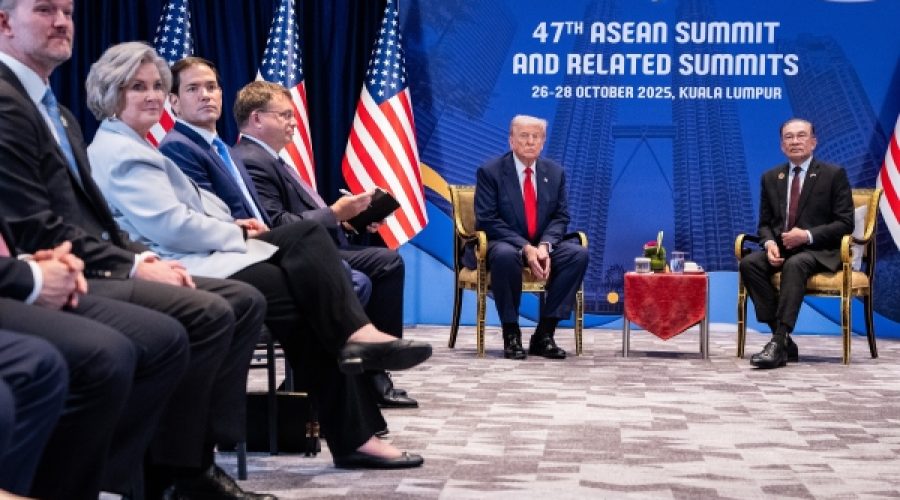Trump Kicks Off Asia Trip with New Trade Deals: What This Means for Your Business Investments in the Region
HONG KONG — President Donald Trump commenced his weeklong Asian tour on Sunday by securing agreements with Cambodia, Thailand, and Malaysia aimed at bolstering his broader strategy to contain China’s influence.
These nations agreed to collaborate with the United States on export controls, sanctions, and the supply of critical minerals—key resources vital to various products such as batteries, smartphones, and military equipment. While the agreements did not explicitly mention China, they clearly support Trump’s effort to reduce China’s dominance in these essential materials.
The White House released a series of documents amid Trump’s meetings with world leaders in Kuala Lumpur, Malaysia’s capital, outlining these commitments. Included was a pledge by these countries to coordinate with Washington in countering unfair trade practices. Experts suggest this means they would respect U.S. sanctions targeting Chinese entities, reinforcing the U.S. objective to “de-risk” from China.
These agreements also reaffirmed the 19% tariff rate already imposed by the U.S. on goods from these countries, while demanding increased market access and preferential treatment for American businesses.
A joint statement with Vietnam reiterated a prior agreement involving a 20% U.S. tariff on Vietnamese imports and measures to facilitate American car exports to Vietnam.
The most detailed deal was with Malaysia, described by Trump as a “major trade deal,” which includes Malaysia’s commitment to invest $70 billion in the U.S. over the next decade.
According to the White House, Thailand agreed to purchase 80 American aircraft worth $18.8 billion, while Cambodia committed to collaborating with Boeing to develop its aviation industry.
Although the mineral commitments announced are nonbinding and require further negotiation, analysts view them as a positive step enhancing Trump’s negotiating leverage.
Notably absent from Sunday’s announcements were specifics on the “rules of origin,” a key issue in Southeast Asia. This policy aims to prevent Chinese exporters from evading tariffs by routing goods through third countries. Finalizing these rules is critical to Trump’s goal of curbing China’s central role in global manufacturing supply chains.
Following Malaysia, Trump is set to visit Japan on Tuesday, where he will meet Prime Minister Sanae Takaichi. Topics likely include Japanese investments in the U.S. and increased defense spending.
The trip’s climax will be Trump’s meeting with Chinese leader Xi Jinping in South Korea, amid a tense standoff over tariffs and strategic access to crucial products—American semiconductors versus Chinese rare earth minerals.
On Sunday, U.S. Treasury Secretary Scott Bessent reported progress in recent U.S.-China trade negotiations held in Kuala Lumpur, describing a “very successful framework” for the leaders’ discussions. Meanwhile, U.S. Trade Representative Jamieson Greer expressed optimism about nearing agreement for the leaders’ review.
China’s chief trade negotiator, Li Chenggang, confirmed a “preliminary consensus” on various issues and noted that both sides will now undertake internal domestic approvals.
This article originally appeared in The New York Times.
Special Analysis by Omanet | Navigate Oman’s Market
The U.S. securing commitments from Southeast Asian countries to control exports, impose sanctions, and collaborate on critical minerals signals a strategic shift to reduce reliance on China. For businesses in Oman, this creates opportunities to explore alternative supply chains and partnerships beyond China, especially in sectors reliant on rare earths and high-tech components. Smart investors should monitor shifts in global trade rules and consider diversifying investments in regions positioned to benefit from U.S.-led economic realignment.



